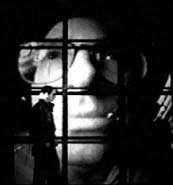The Drivetime
| The Drivetime | |
|---|---|
 Publicity still from “The Drivetime” | |
| Directed by | Antero Alli |
| Produced by | Antero Alli |
| Written by | Antero Alli, Rob Brezsny, Hakim Bey |
| Starring | Michael Douglas, Michael George, Susan Mansfield, Kristen Kosmas, |
| Cinematography | Antero Alli |
| Edited by | Antero Alli and John Comerford |
| Distributed by | ParaTheatrical ReSearch112905 |
Release dates | August 30, 1995 (USA) |
Running time | 88 minutes |
| Country | United States of America |
| Language | English |
| Budget | US$5,000 |
The Drivetime is a 1995 science fiction film directed, written and produced by the Finnish-born filmmaker Antero Alli.
Plot
The film opens in the year 2023 in the Nostradamus Islands. A librarian named Flux recalls a series of earthquakes that destroyed the continental United States. A totalitarian government took control of the United States following the disaster, but video footage from the pre-earthquake world was lost. Flux is sent by the government back in time to Seattle, Washington, of 1999, to locate video footage of a riot that took place prior to the earthquake. He arrives in a society where telecommunications technology has replaced human interactions, and where police operations are presented as television entertainment. He also discovers the government is putting forth footage of non-existent riots as a means of establishing law and order.[1][2]
Production
The Drivetime was produced on a budget of US$5,000 (currently $8,000[3]).[4] Rob Brezsny, author of the syndicated newspaper column Real Astrology, wrote the text for the film’s psychedelic infomercials, while political writer Peter Lamborn Wilson, writing under the nom de plume Hakim Bey, also contributed to the screenplay.[4]
Alli shot The Drivetime in five different video formats – BETA SP, HI-8, VHS, C-VHS, SVHS – and in Super 8 film. The riot footage was culled from the September 10, 1994, riots in Seattle’s Capitol Hill neighborhood that protested allegations of local police brutality.[5]
Release
The Drivetime was first screened at the Velvet Elvis Arts Theater in Seattle in August 1995.[6] The film had a limited theatrical release and was later distributed on DVD.[5]
The Drivetime received mixed reviews. Wired Magazine praised it as “one of the most chilling yet innovative cinematic essays on the flaws of today's technology-obsessed society”[1] while Steven Seid of the Pacific Film Archive praised the film’s “provocative visuals” and noted it was best when plying its 'televisionary' speculations about a spiritual resurgence that will overwhelm virtuality."[7]
However, Robert Firsching, writing for the Amazing World of Cult Movies, dismissed The Drivetime as a “silly mess” and called Alli “a ninny.”[8] Alli, in an interview published by Film Threat, took umbrage with Firsching’s comments by stating:
“Though I often remind myself that any review is only one person's opinion, harsh reviews always hurt. What are you going to do? Stop reading all your reviews? That's just more self-stabbing victim bullshit. Why not pick up some objectivity and identify the bias of the reviewer just to see where they are coming from? Just for fun. When I do this, it's understandable why The Amazing World of Cult Movies calls me a ‘ninny’ and my movie a ‘silly mess.’ That's very funny. If I were as cynical and jaded as them, I'd probably say the same thing.”
References
- 1 2 “Street Cred,” Wired Magazine, October 1996
- ↑ Allmovie overview
- ↑ Federal Reserve Bank of Minneapolis Community Development Project. "Consumer Price Index (estimate) 1800–". Federal Reserve Bank of Minneapolis. Retrieved October 21, 2016.
- 1 2 “Independents’ Day,” Reason Magazine, November 1996
- 1 2 “The Drivetime,” ParaTheatrical ReSearch
- ↑ “Shorts, Shorts Everywhere As New Bugs Makes Debut,” Seattle Times, August 30, 1995
- ↑ Rob Brezsny's Astrology Newsletter, May 21, 2008
- ↑ “The Drivetime,” Amazing World of Cult Movies
- ↑ "Indie Filmmaker Spotlight: Antero Alli," Film Threat, March 18, 2000